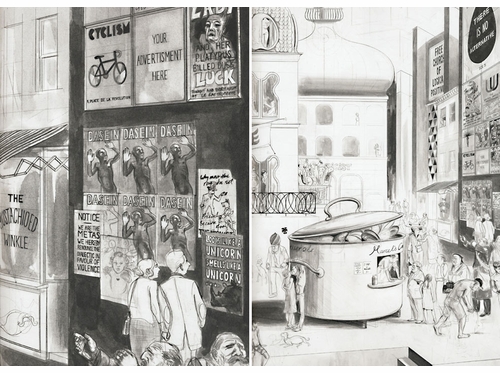ARTBOOK BLOGEventsStore NewsMuseum Stores of the MonthNew Title ReleasesStaff PicksImage GalleryBooks in the MediaExcerpts & EssaysArtbook InterviewsEx LibrisAt First SightThe Artbook 2023 Gift GuidesArtbook Featured Image ArchiveArtbook D.A.P. Events ArchiveDATE 6/1/2024 There's no such thing as being extra in June! Pride Month Staff Picks 2024DATE 5/17/2024 Lee Quiñones signing at Perrotin Store New YorkDATE 5/13/2024 Rizzoli Bookstore presents Tony Caramanico and Zack Raffin launching 'Montauk Surf Journals'DATE 5/12/2024 Black Feminist World-Building in LaToya Ruby Frazier’s ‘Monuments of Solidarity’DATE 5/10/2024 Artbook at MoMA PS1 Bookstore presents Yasmine Ostendorf-Rodríguez and Juan Ferrer on 'Let's Become Fungal!'DATE 5/8/2024 The World of Tim Burton in rare, archival materialsDATE 5/5/2024 Artbook at Hauser & Wirth LA Bookstore presents Yasmine Ostendorf-Rodríguez and David Horvitz on 'Let's Become Fungal'DATE 5/5/2024 Eugene Richards' eloquent new photobook documenting Green-Wood CemeteryDATE 5/2/2024 Dan Walsh and Bob Nickas to launch 'The Process of Painting' at Paula Cooper GalleryDATE 5/1/2024 Celebrate Asian American and Pacific Islander Heritage Month!DATE 5/1/2024 A new book on NYC graffiti art legend Lee QuiñonesDATE 4/30/2024 Rizzoli Bookstore presents Roger A. Deakins with James Ellis Deakins and Matthew Heineman on 'Byways'DATE 4/30/2024 Danny Lyon at Photobook Austin | THOMAS EVANS | DATE 5/3/2011Charles Avery: Onomatopoeia (Walther König/Koenig Books, London, 2011)Of the many inspired curatorial concepts that Harald Szeemann devised in the course of his career, one of the most suggestive was “individual mythologies.” Szeemann debuted the term as the guiding thesis of the legendary Documenta 5, 1972; he later explicated it (in an interview with Hans Ulrich Obrist collected in the latter’s A Brief History of Curating) as “intense intentions that can take diverse shapes: people create their own sign systems, which take time to be deciphered.” Nebulously broad as this may sound, what Szeemann intended by “individual mythologies” was an art in which a unified system, or world view or cosmology manifests itself across a range of media—via a repertoire of signs and symbols, as in Marcel Broodthaers’ eagles, pipes and bricks, or Matt Mullican’s generic Isotype symbols; or through allegory, as in the cosmologies of William Blake, or Paul Thek, whom Szeemann included in the 1972 Individual Mythologies show. Such cosmologies would operate independently of existing religious, scientific and philosophical systems (though inevitably borrowing from them).The Island’s port is named Onomatopoeia, and this second volume in what Avery envisages as a multivolume encyclopedia on The Islanders gives a detailed rendering of what the local businesses and flyposter ads around the port of a philosophical allegory might look like:  “If the drawings are compelling, it is because of the sheer effort I got to and my earnest attempt to portray a place to the best of my abilities,” Avery told a recent interviewer. “It’s as though I have an intense conviction about how this place and its people look.” The Islanders differs from other artistic mythologies in which symbolism is often privileged over description, as Avery’s drawing skill takes the enterprise almost to the realm of the virtual in its illustrative zeal; perhaps it also helps obviate the hazard of author-centric solipsism particular to individual mythologies. With each new installment in the project, Avery throws open another vista onto a fresh corner or hinterland of his philosophical playground. |

